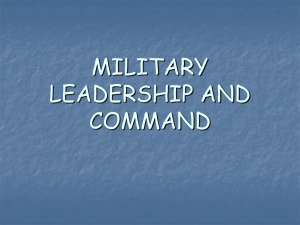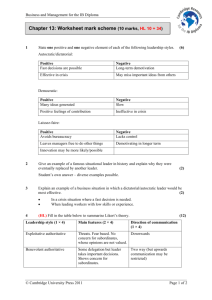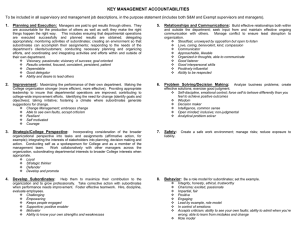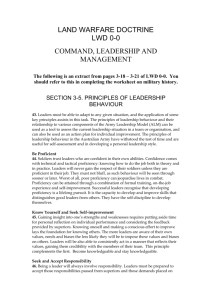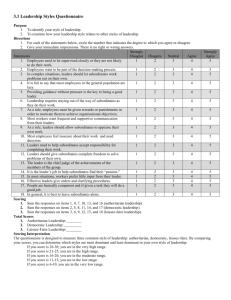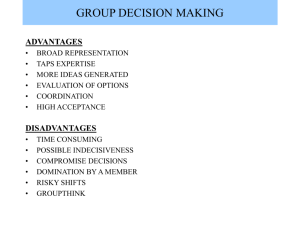Establish a Positive Command Climate
advertisement
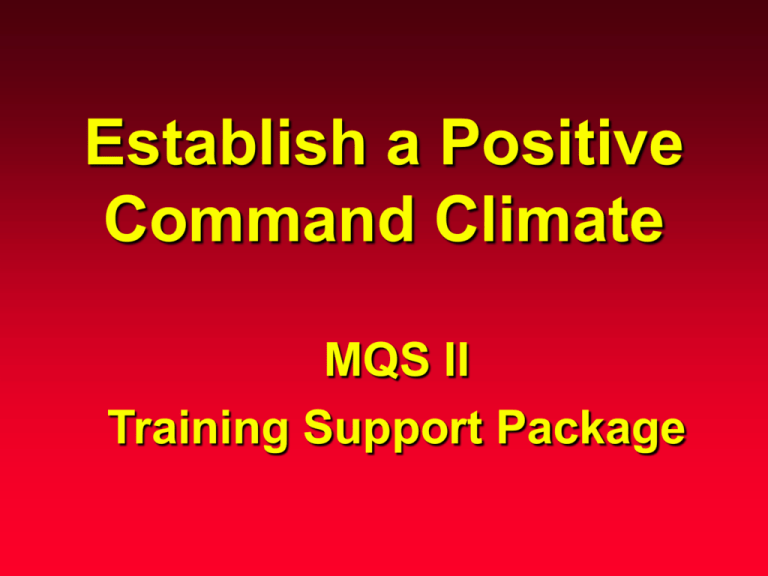
Establish a Positive Command Climate MQS II Training Support Package Purpose Developed a plan which results in a majority of the soldiers in the unit stating that the overall command climate is positive. References • FM 22-100 Army Leadership • DA PAM 600-69 Command Climate Survey Handbook • AR 600-20 Army Command Policy Outline • Define command climate • Assess the command climate to determine the health of your unit • Apply the elements which contribute to a positive command climate • Develop a plan to establish or improve the command climate of a unit following the proper sequence of steps State of Morale Leadership Competencies • Communications • Supervision • Teaching & Counseling • Soldier Team Development • • • • • Technical & Tactical Proficiency Decision Making Planning Use of Available Systems Professional Ethics Command Climate - - Definition - A perception among the members of a unit about how they will be treated by their leaders and what professional opportunities they see within the unit. Morale A moral or mental condition with respect to courage, discipline, and confidence. Climate Areas • • • • • • • Officer leadership Immediate leaders Promotion policy Quality of training Job satisfaction NCO leadership Leader accessibility • Rewards & corrective actions • Tools, equipment, & supplies • Freedom from harrassment • Military courtesy & discipline Climate Areas (Cont.) • • • • • • Unit cohesiveness Social activities Food Morale Human relations Sports activities • Freedom from substance abuse • Soldiers’ attitude toward unit • Reenlistment potential • Commander’s use of the UCP Positive Climate Indicators • Trust exists in the command • Teamwork, fair play, and information sharing • Open, candid communications • Soldier job satisfaction • Soldiers & families attend unit social/sports activities • Reenlistment rate are high Establishing a Positive Command Climate • Determine the “health” of your unit • Identify climate areas you want to influence • Establish clear goals & objectives for each area • Execute plan; command climate is created from the TOP down Actions You Can Take • Communicate a sense of vision or focus • Maintain battle focus in all training • Establish high, attainable, clearly understood standards • Encourage competition against standards rather than each other • Allow subordinates freedom to exercise initiative • Establish accountability at appropriate level Actions to Take (Cont. 2) • Show confidence in subordinates • Encourage & reward prudent risk-taking • Achieve high performance through positive motivation and rewards • Underwrite honest mistakes • Share decision making with subordinates • Give clear missions with boundaries of autonomy Actions to Take (Cont. 3) • Listen to subordinates and seek ideas • Demonstrate concern about the welfare of subordinates • Establish and model high ethical standards • PRACTICE WHAT YOU PREACH Summary • Command climate = perception by unit members • Assessment can be done by formal or informal means • Trust + teamwork + candid communications = positive command climate Conclusion You, as the commander, are the key to a successful command climate Questions?




